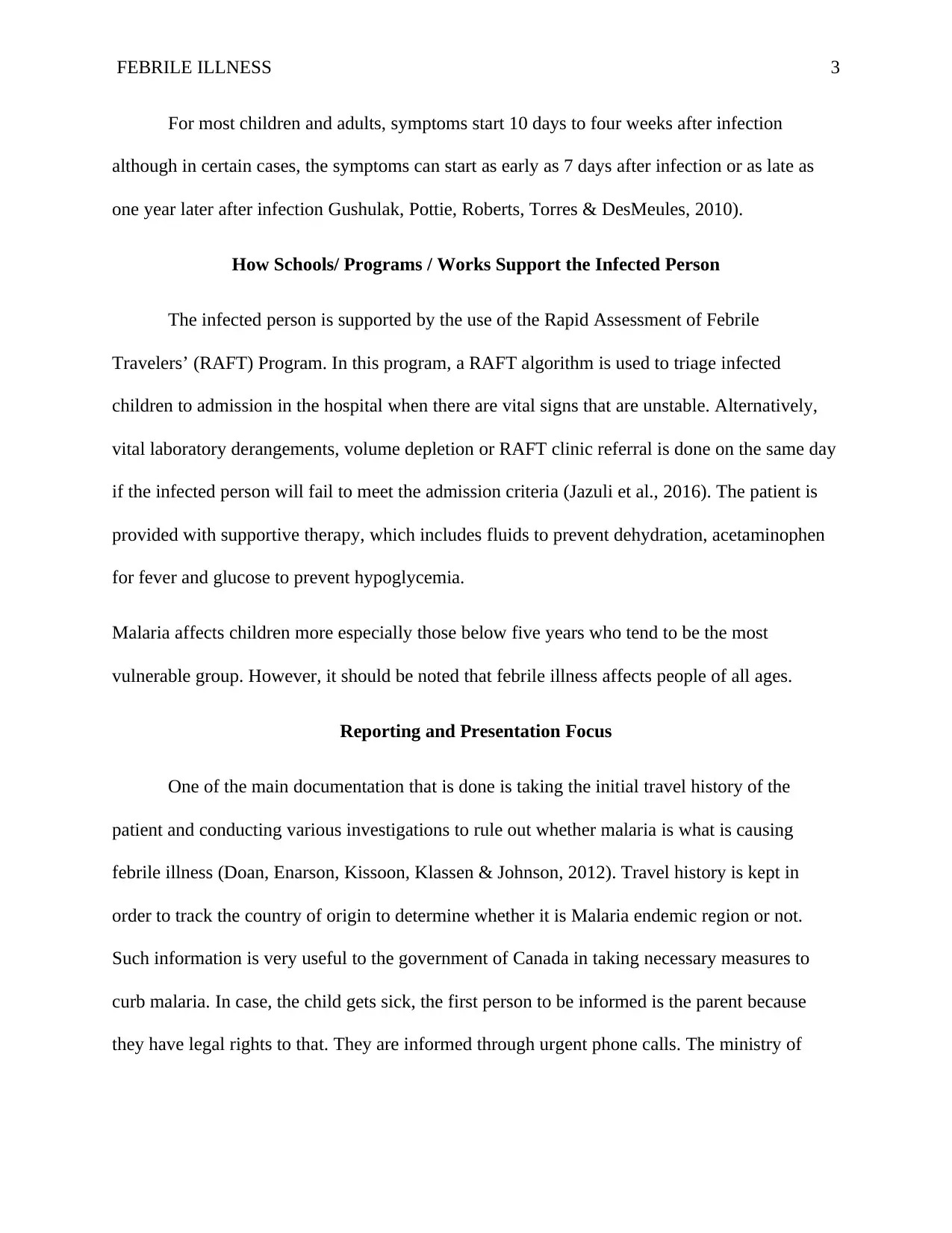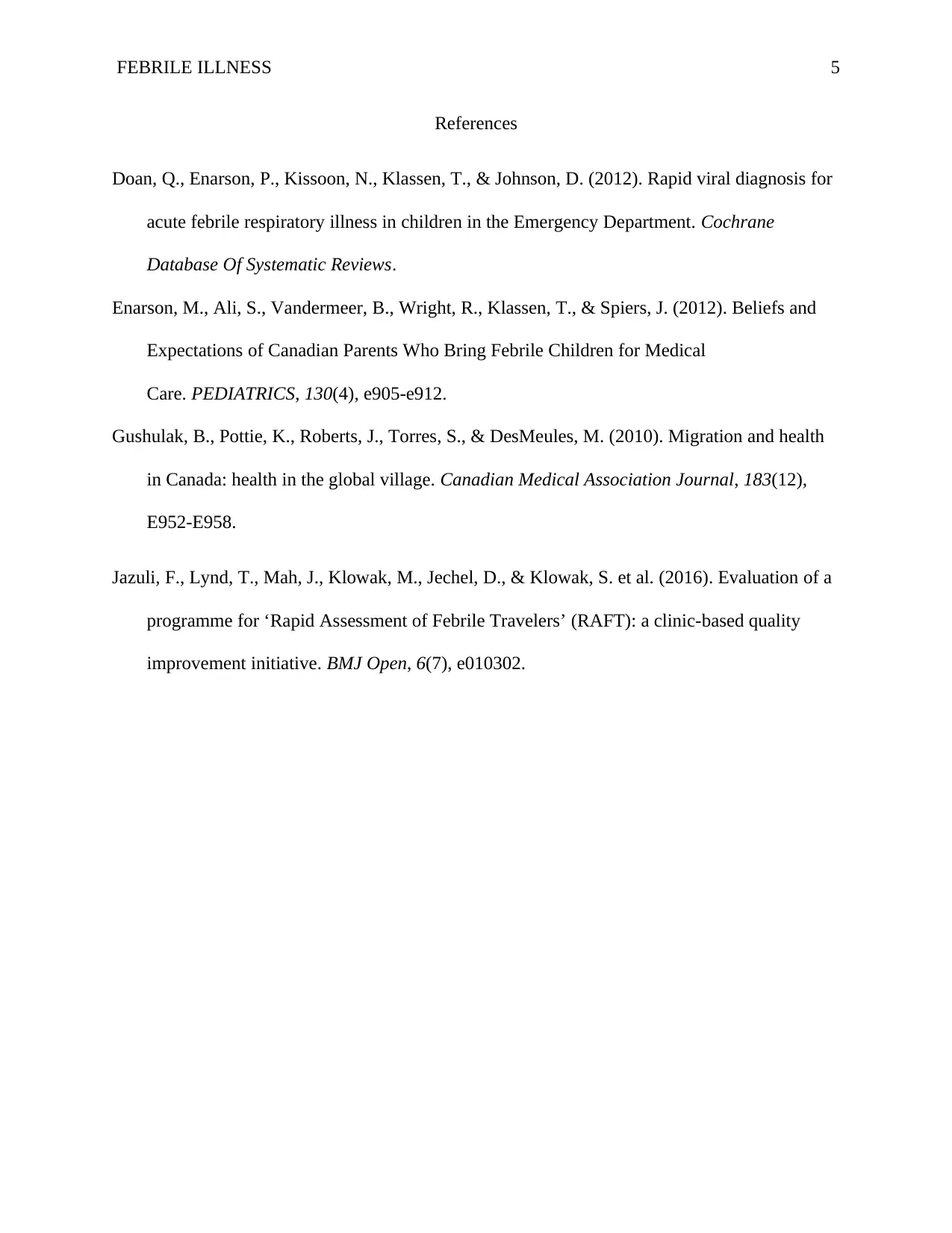Comprehensive Report: Febrile Illness and Public Health in Canada
VerifiedAdded on 2023/01/17
|5
|861
|52
Report
AI Summary
This report addresses febrile illness, a significant health concern for newcomers, particularly refugees, to Canada, often manifesting as chills and fever within the first year of arrival. It emphasizes malaria as a primary diagnosis, transmitted by Anopheles mosquitoes, and highlights preventive measures like antimalarial drugs and mosquito control. The report details common symptoms such as elevated body temperature, dizziness, and potential complications like seizures in children. It outlines the period of infection and the support systems in place, including the Rapid Assessment of Febrile Travelers’ (RAFT) Program, which guides patient care and hospital admissions. The report also covers reporting procedures, focusing on initial travel history and parental notification, and the importance of culturally competent care. References to key research articles and studies are included to support the findings and recommendations for public health interventions.
1 out of 5







![[object Object]](/_next/static/media/star-bottom.7253800d.svg)